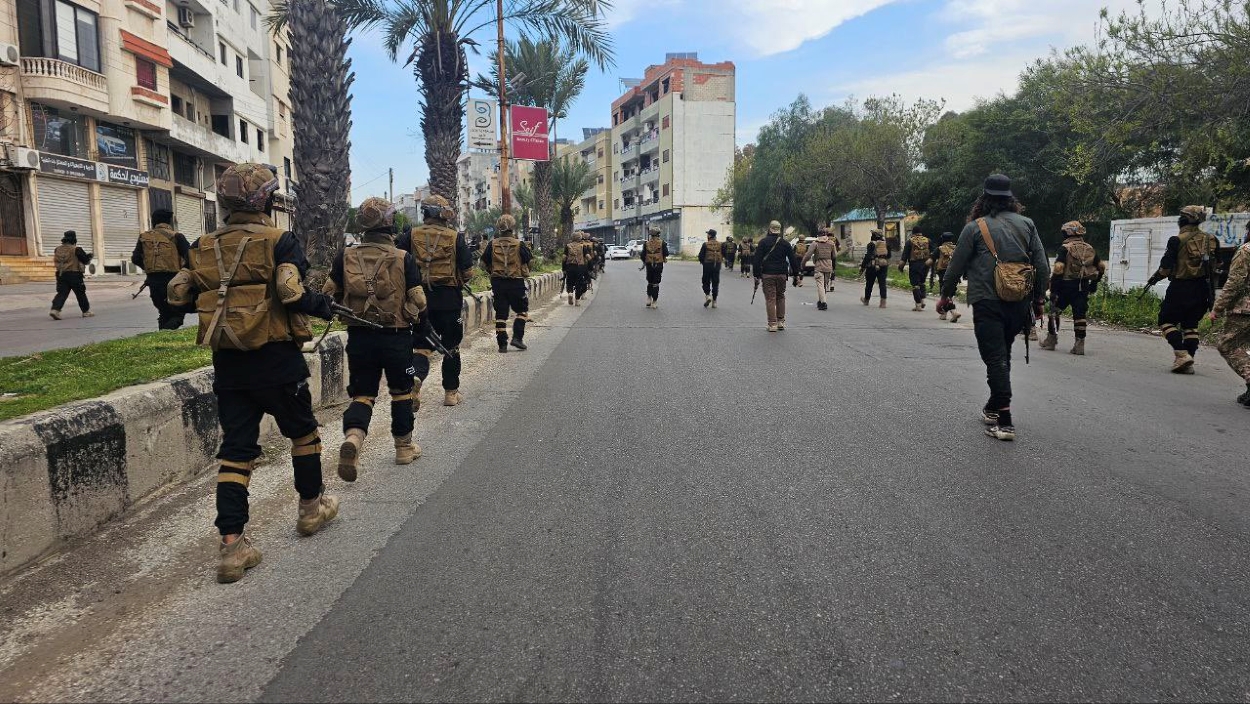Deadly clashes on Syrian coast leave dozens dead
LATAKIA and TARTUS, Syria — The coastal regions of Latakia and Tartus in Syria were engulfed in intense violence on Thursday evening as large-scale military movements and confrontations broke out between local armed groups and the security forces of the Syrian Transitional Government (STG). This escalation underscores the fragile security situation in a region that has largely been spared from the full brunt of Syria’s civil war in recent years.
The clashes came amidst a sweeping security campaign initiated by the Syrian Defense and Interior Ministries, targeting members of local armed groups accused of undermining state authority. These groups have reportedly taken advantage of the rugged mountainous terrain of Latakia and Tartus to launch operations against government forces, further destabilizing the region.
Bloody Confrontations and Escalation
Thursday’s violence marked one of the deadliest days in the region, with helicopter bombardments targeting villages in the Latakia countryside. The General Security Forces of the STG conducted these aerial attacks in an attempt to root out armed groups that had seized control of key military positions.
First ever instance of HTS utilizing a helicopter offensively in Syria, shown here is an Mi-24 firing rockets and the positions of former regime elements in Beit Ana, Latakia. pic.twitter.com/NqVzjBLRPy
— Woofers (@NotWoofers) March 6, 2025
According to the Syrian Observatory for Human Rights (SOHR), the clashes resulted in over 70 fatalities. Among the dead were at least 35 members of the General Security Forces, 32 fighters from the local armed groups, and 4 civilians. Dozens more were injured, and reports of missing persons, prisoners, and unconfirmed rumors of field executions have added to the chaos.
The confrontations spread across several towns and villages in the mountainous areas of Latakia, as well as the northern neighborhoods of Banias and along critical roads connecting Tartus and Hmoth (Homs). Armed groups ambushed government convoys on the Tartus-Homs road and the Banias-Jableh road, exacerbating the violence and hampering the movement of reinforcements.
Potentially major development
– Confirmed takeoff of Russian jets from the Hmeimim base at the Syrian coast; following clashes heard in the far away vicinity of the base (perhaps just precaution)
– Jets are flying alongside helicopters of the Syrian government under Jolani,… https://t.co/S39vmjSnTl pic.twitter.com/ED6DZPKTSK
— ScharoMaroof (@ScharoMaroof) March 6, 2025
Gains by Armed Groups
Local armed groups managed to seize control of several strategic locations, including Istamo Airport and Qardaha, a city of symbolic importance as the hometown of Syrian President Bashar al-Assad. Using the rugged Latakia mountains as their base, the groups fortified their positions and launched coordinated attacks on the General Security Forces, further complicating the government’s efforts to restore order.
These gains highlight the growing challenge posed by local armed factions, which have increasingly become a thorn in the side of government forces in Syria’s coastal regions. Their ability to capture military positions and hold territory reflects a concerning erosion of state authority in a region once considered a loyalist stronghold.
The General Security Forces launched a counteroffensive later in the day, regaining control of most checkpoints in Jableh and re-establishing their presence around the city. Videos of STG forces committing summary executions were widespread on social media on Friday.
Impact on Civilians and Regional Stability
The clashes and curfews have had a profound impact on civilians in Latakia and Tartus, many of whom have been displaced or confined to their homes amid the violence. The imposition of a 24-hour curfew in Latakia, Tartus, and Hmoth reflects the STG’s desperation to restore order, but it has also disrupted daily life and exacerbated humanitarian challenges in a region already grappling with economic hardship.
The seizure of military areas by local armed groups and the ensuing confrontations underscore the broader instability in Syria, especially in areas traditionally considered regime strongholds.
Calls for Protests Against Transitional Government
The Supreme Alawite Islamic Council in Syria and the Diaspora, a newly established religious council claiming to represent the Alawite community, has called for peaceful demonstrations against the security campaigns in the Syrian coastal areas.
In a statement released on Thursday, the Council stated, “Since the fall of the regime, we have adhered to wisdom and self-restraint, not out of weakness, but out of faith in our homeland and civil peace. We have repeatedly called for the submission of a list of wanted persons and to allow dignitaries to enter during the search campaigns, but our requests have been met with neglect and procrastination.”
The Council’s statement also highlighted that abuses and the “unruliness of elements” had escalated beyond acceptable limits, resulting in violations of residents’ properties, the public use of sectarian language, and “campaigns of terror and murder from which neither civilians nor children have escaped.”
The Council further urged the people of the Syrian coast to organize peaceful sit-ins in public squares, stating, “Support your people in the villages of Jableh and elevate the voice of truth against oppression. Protest with strength, but wisely, do not raise anything but national slogans, and do not touch properties, for we want to protect our people.”

















